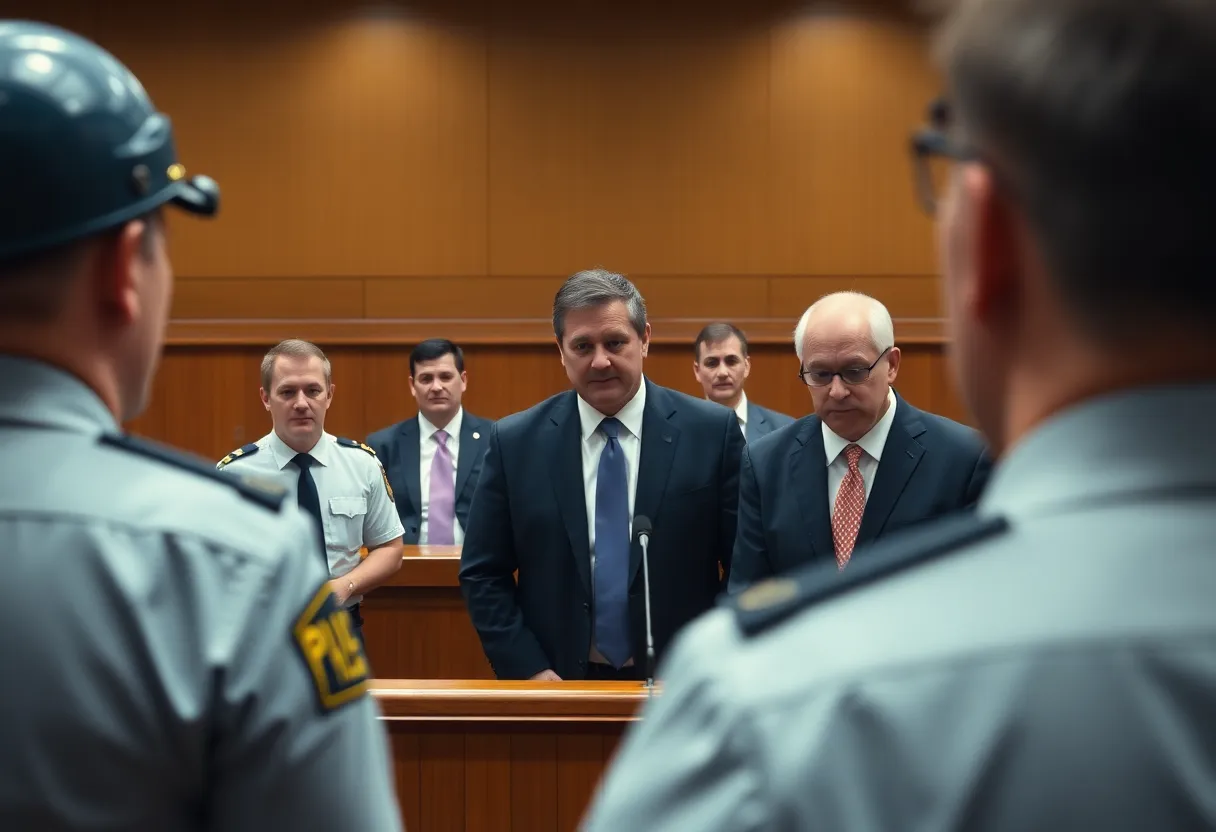Maryland, October 4, 2025
A California resident has been sentenced to over eight years in prison for plotting to assassinate Supreme Court Justice Brett Kavanaugh. Nicholas Roske, motivated by political frustrations, was apprehended outside Kavanaugh’s home with weapons and tools indicating intent to harm. The incident, which occurred shortly after a leaked draft opinion on Roe v. Wade, highlights security vulnerabilities faced by justices amidst rising political tensions. Following the incident, measures to enhance judicial security are being prioritized to protect high-profile officials.
California Man Sentenced to Over 8 Years for Plotting to Assassinate Supreme Court Justice
Maryland – A California resident has received a prison sentence exceeding eight years for his failed attempt to assassinate Supreme Court Justice Brett Kavanaugh. The sentencing, finalized in recent days, stems from a high-profile 2022 incident that exposed vulnerabilities in judicial protection amid escalating political divides.
The convicted individual, Nicholas Roske, was apprehended outside Kavanaugh’s residence armed with a handgun, knife, zip ties, and other tools suggesting intent for immediate action. Court proceedings revealed Roske’s motivations tied to political frustrations, particularly over Supreme Court rulings on sensitive issues like abortion rights and gun control. This case underscores the growing threats faced by high-profile officials in a polarized climate.
Authorities halted the plot when Roske contacted emergency services himself, expressing fear over his intentions. This self-report led to his arrest without any harm coming to the justice or others. Federal prosecutors emphasized the premeditated nature of the plan, noting Roske’s travel from California to Maryland specifically to target Kavanaugh. The sentence includes supervised release terms post-incarceration to monitor compliance and prevent future risks.
Local law enforcement and federal agencies have ramped up security protocols around judicial figures since the incident. Officials highlight the critical need for enhanced protection measures, including better surveillance and rapid response teams, to safeguard the judiciary from such threats. The event has prompted broader discussions on political rhetoric’s role in inciting violence.
Details of the Incident and Investigation
The plot unfolded in late June 2022, shortly after a leaked draft opinion indicated the Supreme Court’s intent to overturn Roe v. Wade. Roske, then 26, flew from California to the Washington, D.C., area. He carried a tactical vest, ammunition, and a backpack filled with items designed for restraint. During his approach to Kavanaugh’s home in Chevy Chase, Maryland, Roske texted a family member admitting his dark thoughts, which triggered his call to 911.
Upon arrival, U.S. Marshals and Montgomery County Police secured the scene, finding Roske cooperative but visibly distressed. Searches of his belongings confirmed the assassination toolkit. Investigators later uncovered online searches by Roske related to Kavanaugh’s address and family details, painting a picture of deliberate preparation over weeks.
The trial focused on charges of attempted murder of a U.S. official. Defense arguments centered on Roske’s mental health struggles, but prosecutors successfully demonstrated intent and capability. The over eight-year term reflects the severity of endangering a Supreme Court justice, whose role impacts national policy profoundly.
Implications for Judicial Security
This sentencing arrives as political tensions simmer nationwide. The Supreme Court has faced protests and threats, leading to temporary adjustments in justices’ routines, such as remote hearings. Experts note that while isolated, such attempts erode public trust in institutions and heighten fears among public servants.
Following the 2022 event, the U.S. Marshals Service expanded its judicial security budget. Measures now include 24-hour monitoring for justices and coordination with local police for residential areas. Officials stress that these steps aim to deter future incidents without compromising accessibility to the courts.
Broader Context of Political Violence
The case fits into a pattern of rising threats against elected and appointed officials. In recent years, incidents involving judges, lawmakers, and law enforcement have increased, often linked to ideological clashes. Roske’s actions were influenced by the heated debates surrounding the Dobbs v. Jackson decision, which ended federal abortion protections.
Communities and advocacy groups have called for de-escalation in public discourse. While no direct connections to organizations were found in this case, it serves as a stark reminder of how online echo chambers can amplify extreme views into real-world dangers. Law enforcement continues to monitor such trends to prevent escalation.
The sentencing provides some closure, but authorities remain vigilant. Protecting the judiciary remains a priority, ensuring that justices can deliberate without fear. As the nation navigates its divisions, cases like this highlight the ongoing challenge of balancing free expression with safety.
FAQ
What was Nicholas Roske sentenced for?
A California resident has received a prison sentence exceeding eight years for his failed attempt to assassinate Supreme Court Justice Brett Kavanaugh.
When was Nicholas Roske arrested?
The plot unfolded in late June 2022, shortly after a leaked draft opinion indicated the Supreme Court’s intent to overturn Roe v. Wade.
What items was Nicholas Roske carrying when apprehended?
Roske was apprehended outside Kavanaugh’s residence armed with a handgun, knife, zip ties, and other tools suggesting intent for immediate action.
What motivated Nicholas Roske’s actions?
Roske’s motivations tied to political frustrations, particularly over Supreme Court rulings on sensitive issues like abortion rights and gun control.
How has judicial security been affected by this case?
Local law enforcement and federal agencies have ramped up security protocols around judicial figures since the incident. Officials highlight the critical need for enhanced protection measures, including better surveillance and rapid response teams, to safeguard the judiciary from such threats.
| Feature | Description |
|---|---|
| Sentence Length | Over 8 years in prison |
| Perpetrator | Nicholas Roske, California resident |
| Date of Incident | Late June 2022 |
| Weapons and Items | Handgun, knife, zip ties, tactical vest, ammunition |
| Motivation | Political frustrations over Supreme Court rulings on abortion and gun control |
| Security Impact | Enhanced protocols including surveillance and rapid response teams |




